I wouldn’t consider myself a full-on ocean person.
Yes, I surf. Yes, I swim. But that’s the extent of my ocean frolicking.
The main reason? I get seasick. I could probably get seasick watching someone else get seasick.
But when the opportunity to sail with the historic Hōkūleʻa came up, I jumped at the chance. Sick or not, I couldn’t pass up the chance to help crew on one of the most culturally significant and important symbols of Hawai‘i.
For the past week, the double-hulled sailing canoe was docked at the Hawaii Kai Towne Center (above), where thousands of people — from schoolkids to kupuna — got to climb aboard, tour around and learn about the Hōkūleʻa before it embarks on an ambitious worldwide voyage starting next May.
Sunday’s sail was at the last leg in the Mālama Hawaiʻi statewide sail, where the canoe and its sister, Hikianalia, made 30 stops across the state including to remote spots like Kaho‘olawe and Kalaupapa on Moloka‘i. It was leaving Hawai‘i Kai, stopping in Waikīkī, then heading to Ko Olina, where it will docked for people to visit for another week.
Over the next four years, both canoes will travel to 28 countries and stop at 85 international ports, sailing more than 45,000 nautical miles around the world.
On Sunday it left Hawai‘i Kai (above) with dozens of canoes, boats, kayaks and SUPs to escort her into Maunalua Bay.
They were here, like me, because the Hōkūleʻa means something to them, to our community. It was moving to see how many people turned up that early to meet the canoe and see her out to the open ocean.
The mission of Hōkūleʻa and this worldwide voyage is navigate toward a healthy and sustainable future for us, for Hawai‘i and for the entire world — what the Polynesian Voyaging Society refers to as Island Earth — through voyaging and new ways of learning.
Part of my experience on Sunday was to actually learn what the crew does. There are more than 300 people who will be trained for the four-year-long voyage around the world. (Here are two above.) It takes months of classroom and hands-on learning to train for the voyage.
It took us more than an hour to set up the masts and sails before we could depart Maunalua Bay and head toward Waikiki. And it took all hands to help. It was really a larger lesson about community, about helping, about the meaning of mālama.
But the winds didn’t cooperate — too light and blowing in the southwestern direction — so we had to call the escort boat to tow the canoe toward the Maritime Education Training Center on Sand Island.
In the meantime, I got sick. Really sick. I sat in the middle of the boat, huddled up in a towel and hoping the sail would be over soon. I was miserable.
And yet, everyone on the boat stopped to talk to me, to rub my back and shoulders, to tell me stories or make me laugh to get my mind off my seasickness. This is what the Hōkūleʻa does — it makes people see the larger picture, to realize that “we” is stronger than “me,” and that we have to live in this world together so why not work together and love each other.
Once we got to Waikīkī, we stopped and drifted a little so the crew could pay its respects to the folks whose ashes had been scattered in these waters. People like Pinky Thompson, Joanne Kahanamoku and Eddie Aikau who were instrumental in Hōkūleʻa, its mission and purpose. Captain and training coordinator Bruce Blackenfeld (shown at left) told us stories about them — a simple reminder that we must always remember and respect the people who came before us.
After we sang “Aloha Oe,” I suddenly felt better. I had already thrown up several times and thought I was going to be sick for the entire sail. But I perked up, and finally I found my sea legs.
The last push was to the Maritime Education Training Center in Sand Island where Hikianalia was in dry dock and another crew was waiting to jump on Hōkūleʻa and head to Ko Olina. It took about half an hour to get there, and I was glad I felt better — I could actually walk around! — for the last few moments aboard this historic vessel.
It was more than just a great opportunity. It was a lesson in service, in gratitude, in survival (for me), in believing there’s something more and bigger out there and that we are all connected to each other. We live on this island in the middle of the Pacific Ocean, yet we belong to the same Island Earth. And what we do matters. And what we don’t do matters, too.
So let’s do something. Even if it’s something that makes you uncomfortable or, in my case, completely sick. If it matters, do it.
Visit the canoe at the Ko Olina Marina from 3 to 5 p.m. daily through Friday. To learn more about Hōkūleʻa’s historic worldwide voyage, click here.

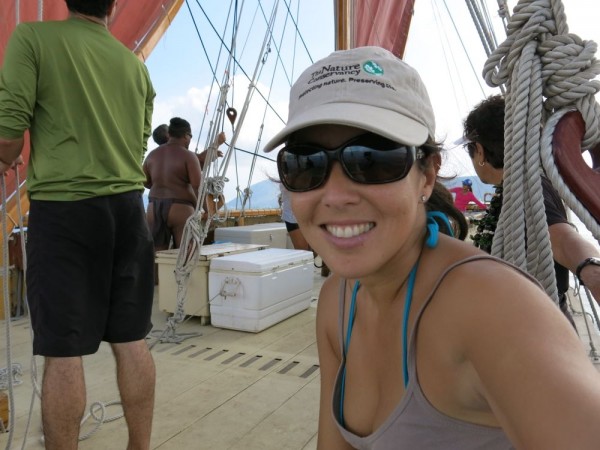
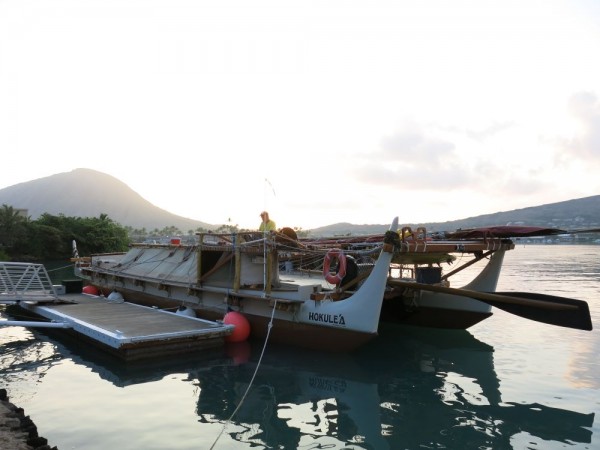
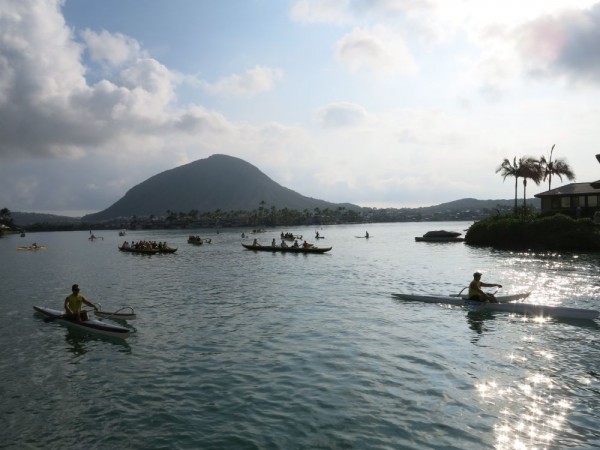
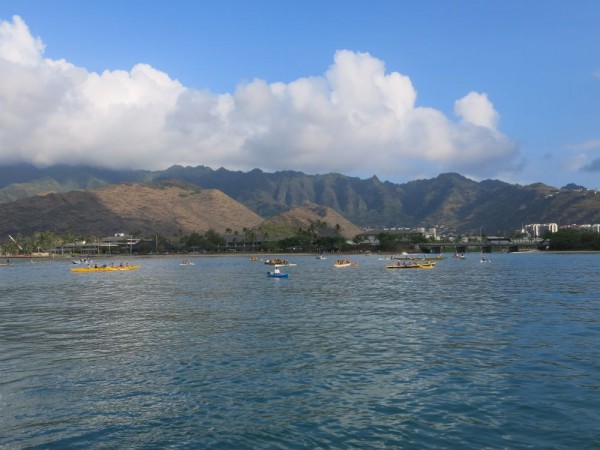
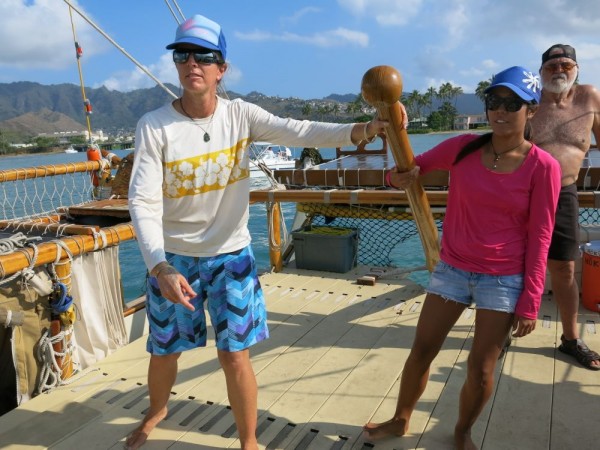
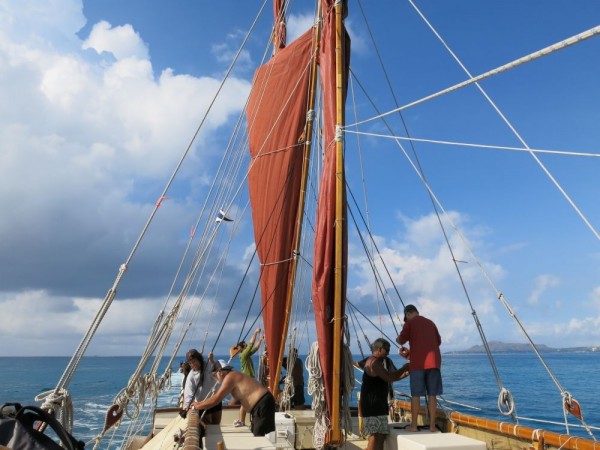
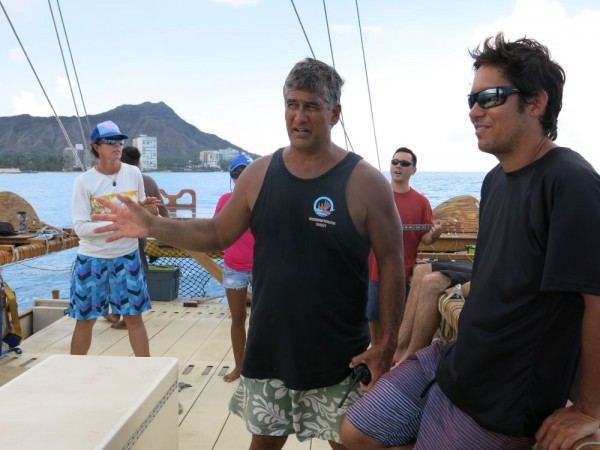
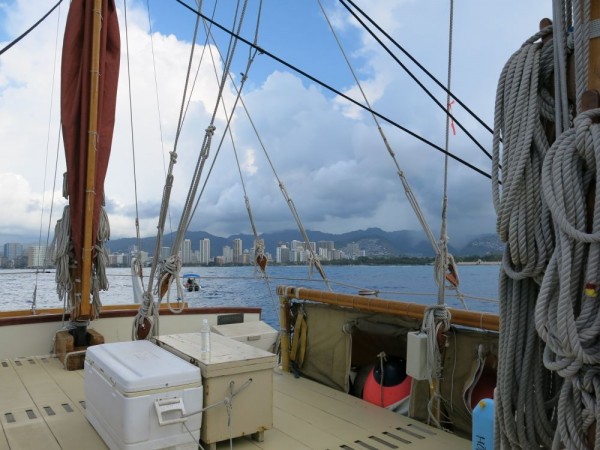



8 Comments
Aloha Monday Cat!
Thank you for taking one for the team to report about the historic voyage Hokulea will be undertaking for the next four years.
Hope you’re feeling better.
Ed
Great stuff Cat, does not look like much wind on this day! Probably good for your seasickness 🙂 I think the Pacific Voyaging Society owns a sailboat I used to crew on, or they did at one time called the Maunalani Flash. Having sailed the waters you were on the photos brought back many good memories. TANKS big time.
Hello Cat,
Being on the bow and looking at the horizon or far away works for me. When I was younger I was prone to seasickness, as I got older I don’t get seasick to often. Being seasick is like the worst feeling ever.
Hey Cat: wow, that’s an amazing “Did This” adventure … too bad it put you out of commission … but at least you did it … you’ve sailed on the Hokule’a …
… I don’t have sea legs either … as i found out on a fishing trip … but I always look fondly back at the memory … even with being sick for most of the trip …
I am native hawaiian unfortunately I navigate through a 48 hour work week trying to stay afloat in life. Your adventures are a nice vacation from a grueling day, you remind me of Uncle Traveling Mat from Fraggle Rock.
Awesome ! I’m like you, I got seasick just reading this blog. Great history for Hawaii!
CAT: For a surfer, bobbing on the waves waiting for the right set, it is really hard to believe you could get sea sick. I don’t have any remedies that work and I have seen people really get sea sick…they think they are going to die!
Sorry to hear about your sea sickness. I have known Bruce Blankenfield for 25 years and always enjoyed our “talk story”. I am a land lover so it’s great to hear stories of his travels on the ocean to different parts of the world. I wish them the best in their upcoming travels and their efforts to spread the spirit of “Aloha” around the world.